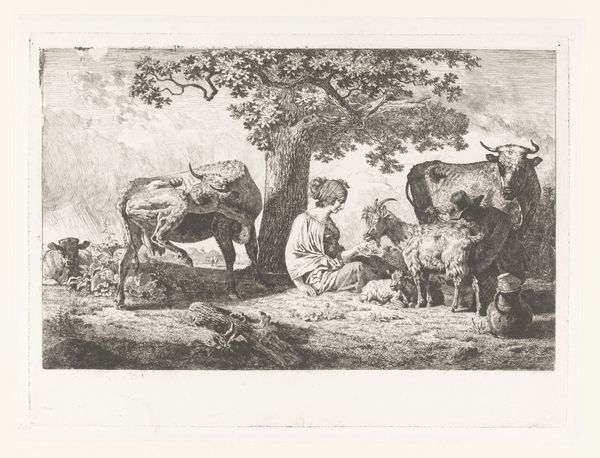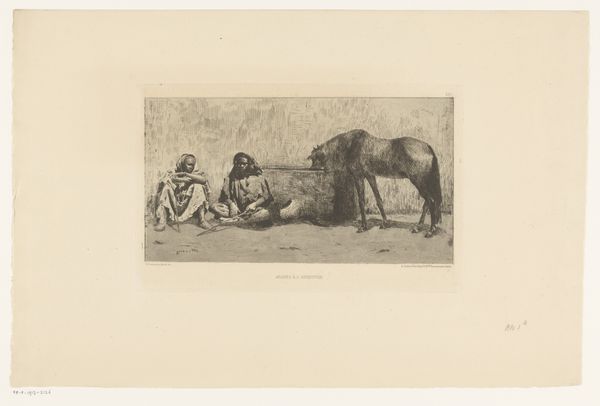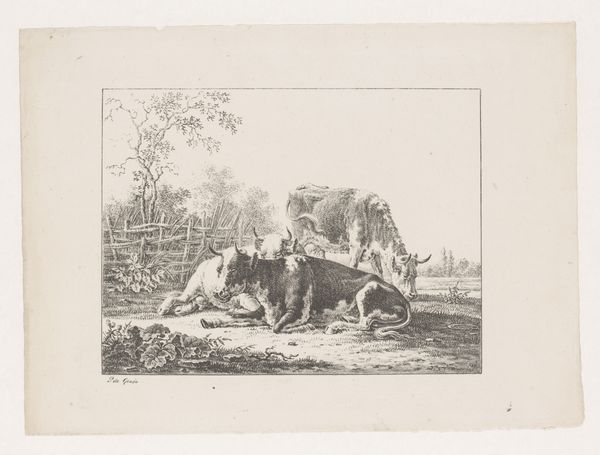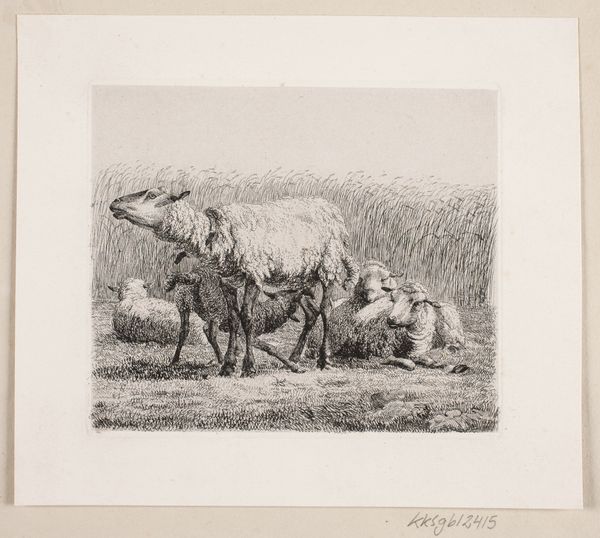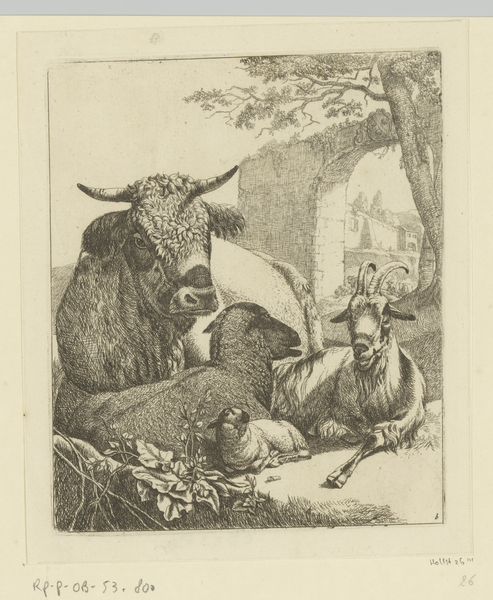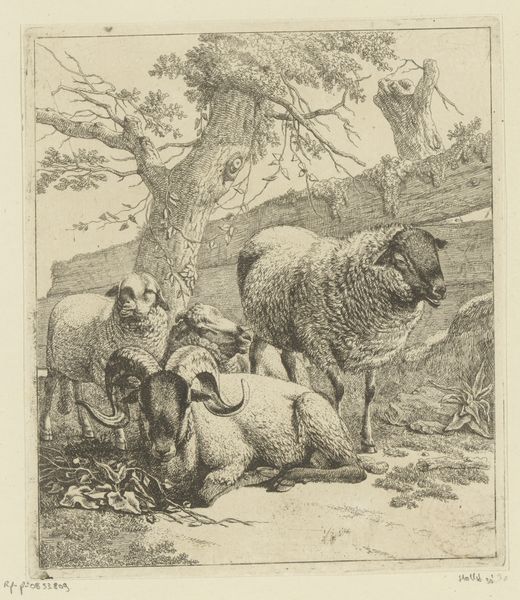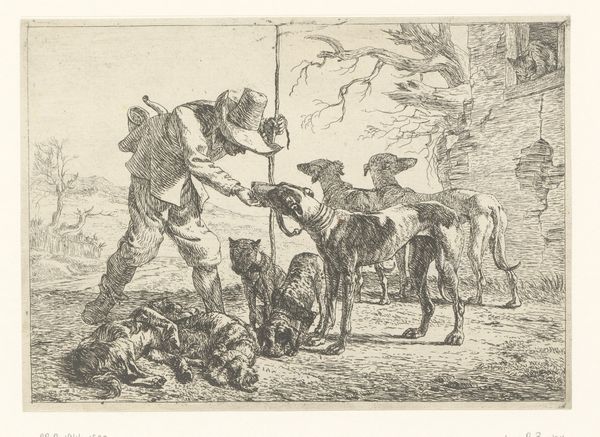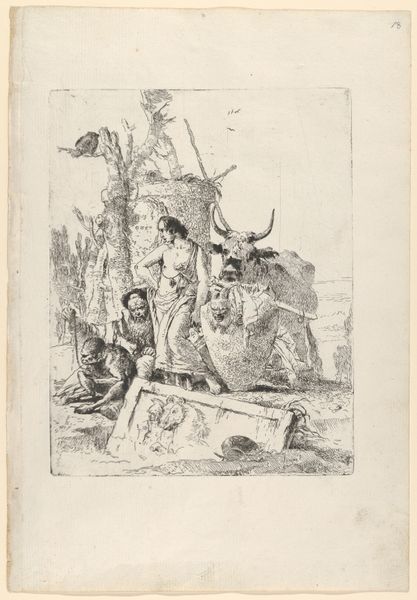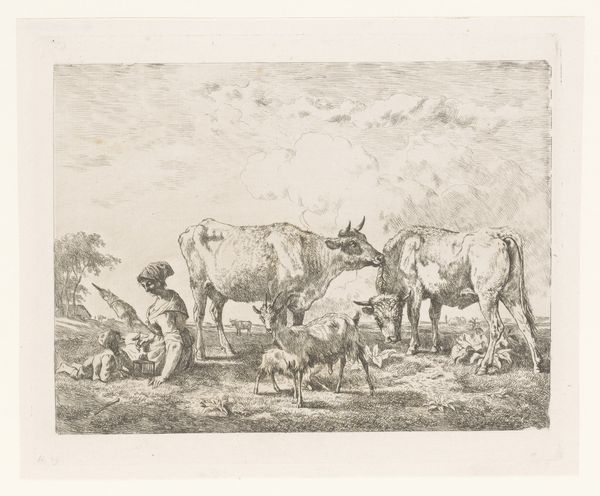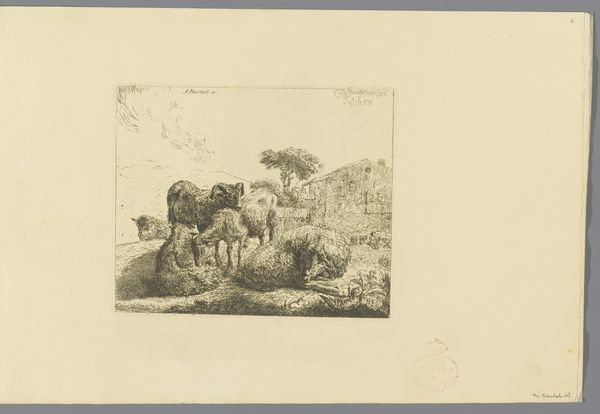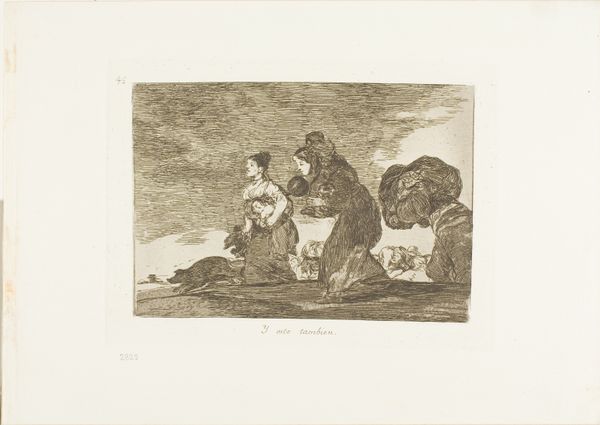
drawing, etching, ink, engraving
#
drawing
#
dutch-golden-age
#
etching
#
landscape
#
figuration
#
ink
#
genre-painting
#
engraving
#
realism
Dimensions: height 128 mm, width 171 mm
Copyright: Rijks Museum: Open Domain
Curator: What a wonderfully serene pastoral scene! This is a Dutch Golden Age engraving by Abraham Jansz. Begeyn, likely created between 1647 and 1697. The work is called “Herder staat bij koe en twee geiten bij vervallen muur,” or “Herder Standing by Cow and Two Goats Near a Collapsed Wall." Editor: My first thought is the stark contrast. It’s such a high contrast image. It feels kind of empty, though. Very quiet. There's a notable contrast between the shaded figures and the bare landscape. Curator: Indeed, the piece definitely embodies that Golden Age aesthetic, a realism centered around genre-painting combined with elements of a landscape, and printed through the techniques of engraving, etching and drawing with ink. We can see that rural life was clearly a source of interest and value during this period, and, furthermore, its accessibility as an etching surely indicates a far reach to lower- and middle-class households. Editor: Looking at the composition, I see how the figures create this sense of space, like a shallow foreground. Then your eye goes back to a pretty undefined background, and you get a feeling of depth, especially given how much the human figure seems lost or small, relatively. The animals and the shepherd lean to one side while this architectural feature, this wall, grounds them almost like an altar. Curator: That collapsed wall does seem significant. Ruins were romanticized during this period, you know. They speak to time passing, the impermanence of human structures against the enduring natural world. It brings this rustic quality, which must have made it popular even as a piece for wealthier individuals looking for rural subject matters. I'd venture the collapse gives the feeling that the world isn’t stable, the way genre-painting is traditionally viewed. Editor: I find the engraving very detailed. Consider the textural rendering, too! The rough fur of the animals versus the crumbling stone of the wall, and how different line techniques communicate those surfaces, adding to the naturalism but also to the contrast within the entire print. There’s movement created within an otherwise static scene. Curator: You've got an excellent eye for that texture! It all serves to remind us of the realities of Dutch life. We need to remember, in a lot of genre painting from the time, that these artists are using the landscape for some type of didactic social message. Maybe the purpose here is as simple as portraying harmony through pastoral life? Editor: Yes, or a way to contrast human artifice and decay with animal endurance. That cow seems pretty content, all things considered. Thanks for bringing this history to the fore! It really does re-orient the scene within a different world, with meaning more than just as pretty images. Curator: Thank you! By delving into its social and cultural context, the piece resonates beyond its pleasing aesthetics. It is always beneficial to consider what social and art values were, during the time of a piece’s inception.
Comments
No comments
Be the first to comment and join the conversation on the ultimate creative platform.
